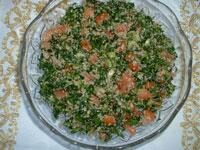Student Work on the Art of Arabic Calligraphy
For more than 1,400 years, calligraphy has been celebrated as one of the Middle East’s greatest art forms, says Duke Professor Muhammad Habib. This past Wednesday evening, Habib a 20 Duke undergraduates to this challenging tradition in a workshop.
The workshop, co-sponsored by the Asian and Middle Eastern Studies (AMES) Department, Duke Islamic Studies Center and the Duke-UNC Consortium for Middle East Studies, has become a biannual tradition at Duke.
“Many of the finest examples of calligraphy are passages from the Quran, the Holy Book of Islam,” Habib said. “However, calligraphy is not only limited to spiritual works; it can also be used to write poetry, royal decrees, stories, proverbs, and many other types of writings.”
Students tried their hand at imitating a famous proverb, which is frequently the first line of calligraphy given to an apprentice calligrapher to master. It is only after successfully receiving the master calligrapher’s approval that the student is taught to write the individual letters of the alphabet and letter combinations.
Many of those who participated in the workshop said they see calligraphy as a way to learn more about Middle Eastern culture. “I am an Arabic major, and motivated by being exposed to different aspects of Arabic culture,” said Emilyn Ericson, a sophomore.
For Sarah Haas, also a sophomore, the workshop offered an opportunity to continue building on her experience in Cairo over the summer with Duke Engage. “I had been exposed to it [calligraphy] a little bit in Egypt, but never got the chance to really learn techniques,” Haas said.
The tools that students used during the workshop were far simpler than the elaborately crafted implements favored by most calligraphy masters. Pens, paper, and ink are all hand-prepared, and the techniques for making these tools require nearly as much training as the art itself, Habib said. The reed pen employed by traditional calligraphers, for example, must be aged, treated, carved to specific proportions, and slit to hold ink before use. This ink is then made from soot in a delicate process, which, though tricky to learn, yields a dye that can retain its color for centuries.
DukeTODAY


